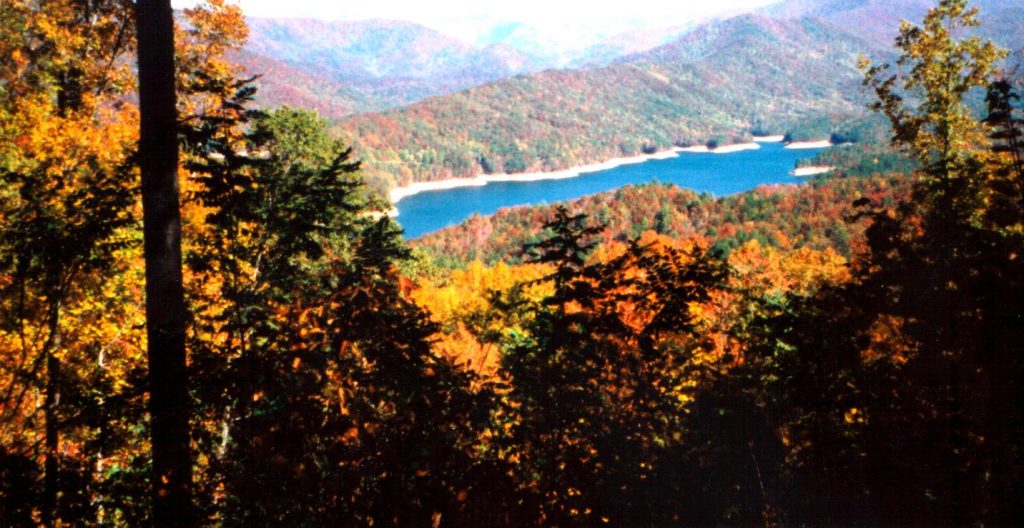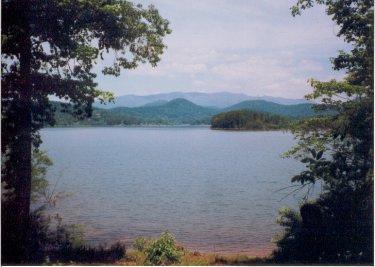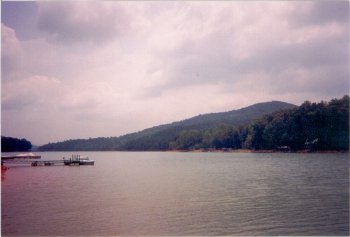All the Lakes in this region are classified a reservoirs by the TVA, Tennessee Valley Authority and are maintains by dams and power system requirements. To learn more about these beautiful lakes and their recreational benefits see more info.
Click here for TVA lakes recreation information
Hiawassee Dam, construction of the dam began in 1936 and was completed in 1940. Hiawassee Dam is 307 feet high and stretches 1,376 feet across the Hiawassee River. .When building it, the Tennessee Valley Authority (TVA) created 163 miles of shoreline and splendid recreational opportunities and has a flood-storage capacity of 437 million cubic yards. The generating capacity of Hiawassee is 121,000 kilowatts of electricity.
Cherokee Lake, about a mile in circumference – is operated by the Tennessee Valley Authority and offers a new fishing pier, designed for easy access for disabled individuals. Children will also enjoy using the fishing pier. The lake is fed vial the backwaters of the Hiawassee Reservoir, and is located off of NC 294.
Lake Appalachian, Because Appalachia was designed for power production rather than flood control, TVA typically maintains the water level in the reservoir between 1,272 and 1,280 feet of elevation.
Nantahala Lake, located about 15 miles east of Andrews, is a cold-water impoundment and is the only lake in the state which contains Kokanee salmon, a freshwater hybrid of the sockeye salmon. Public boating access is available. Nantahala Lake is know as the highest elevation Lake east of the Mississippi.
Santeelah Lake, about 35 miles from Murphy near Robbinsville in Graham County, is known for its smallmouth bass fishery. Three public boat ramps are located along its shores.
Nottley Lake, also has easy access for boaters and is part of the TVA reservoir chain. It too is known for its population of bass and walleye, as well as catfish and brim. Nottley Reservoir is located on the Nottley River in north Georgia, stretching 20 miles to the southeast from the dam. Nottley Dam, located just south of the North Carolina border, was built during World War II. Construction of Nottley Dam began in 1941 and was completed in 1942. Nottley Dam is 199 feet high and stretches 3,915 feet across the Nottley River. Nottley has a flood-storage capacity of 161 million cubic yards. The generating capacity at Nottley is 16,000 kilowatts of electricity.
Fontana Reservoir, 35 miles north of Andrews, is Western North Carolina’s Largest Lake. Fontana Reservoir is located on the Little Tennessee River deep in the forests and mountains of western North Carolina. The highest dam east of the Rocky Mountains, Fontana ranks among the most scenic in the world. It holds a healthy population of a variety of fish, with a number of public boat launches on Fontana’s
Chatuge Lake, in Clay County is the warmest and most shallow of the mountain reservoirs, and provides an excellent habitat for largemouth and spotted bass. Chatuge Reservoir, located on the Hiawassee River in western North Carolina, is 13 miles long and extends southeast from the dam into north Georgia. The reservoir is named after a nearby Cherokee settlement. Construction of Chatuge Dam began in 1941 and was completed in 1942. Chatuge was originally built to store water to help prevent flooding downstream. A single hydropower generating unit was added in 1954. The level of water in Chatuge Reservoir varies about 15 feet during the course of a normal year. Chatuge Dam is 150 feet high and stretches 3,336 feet across the Hiawassee River. Chatuge has a flood-storage capacity of 150 million cubic yards. Generating capacity at Chatuge is 10,000 kilowatts of electricity.




